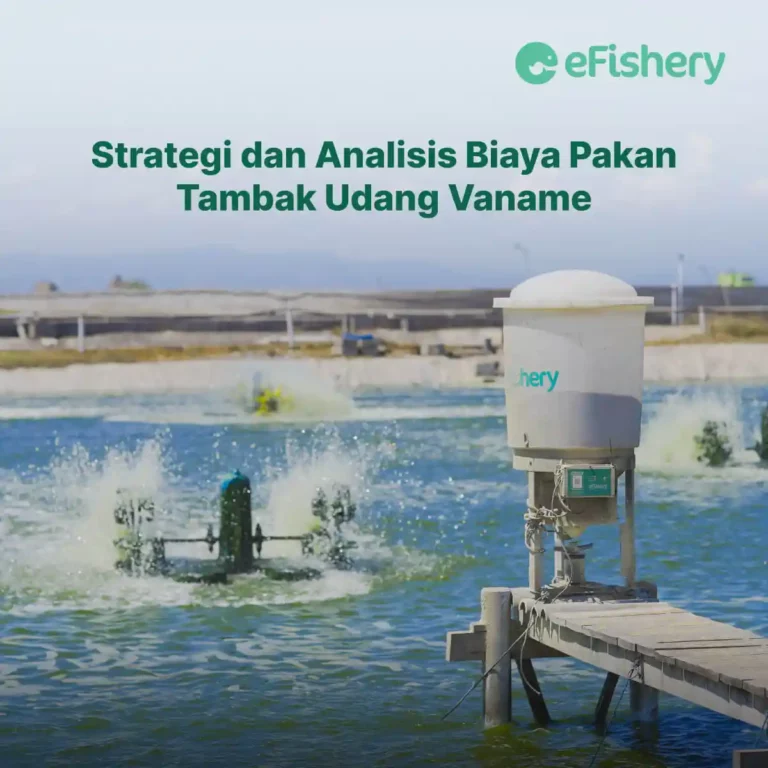Artikel Ini Telah Direview Oleh:
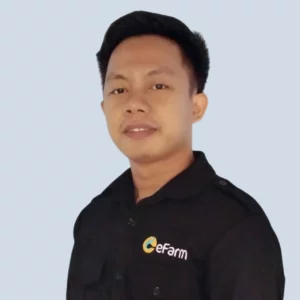
Muhammad Mustofa
Praktisi Budidaya Udang
Management of vannamei shrimp pond feed costs is one of the steps used to optimize cultivation profits. Vaname shrimp feed is a very important factor in aquaculture because it absorbs 60-70% of the total operational costs.
In addition to being able to stimulate the growth and development of shrimp, the management of vannamei shrimp feed costs can also prevent feed costs from escalating. So that you avoid losses and get optimal profits. Read more here!
Cost and Needs of Feeding Shrimp
Shrimp feed is obtained in two ways, namely by buying factory feed and making feed independently. The two methods have differences in price and quality.
Factory feed has a nutritional content that is in accordance with the Indonesian National Standard (SNI) at a price that is quite expensive for 1 kg of feed, while independently made feed has a nutritional content that can be adjusted according to the wishes of the farmer, for example, you want to increase the protein or carbohydrate content. in the prepared feed. In addition, feed that is made independently can reduce feed operational costs because the price is relatively low for 1 kg of feed. The following is an example of estimating the cost of factory feed and self-made feed.
1. Estimated Cost of Factory-Made Shrimp Pond Feed
For example, there is a stocking density of 100,000 heads with an intensive cultivation system. The total estimate for vannamei shrimp feed until harvest (1 cultivation cycle) is 3,556.92 kg. Usually range Factory feed is in the range of Rp. 12,500 to Rp. 20,000 more per kg, depending on the type and brand of feed. The following is an example of estimated factory-made shrimp pond feed costs:
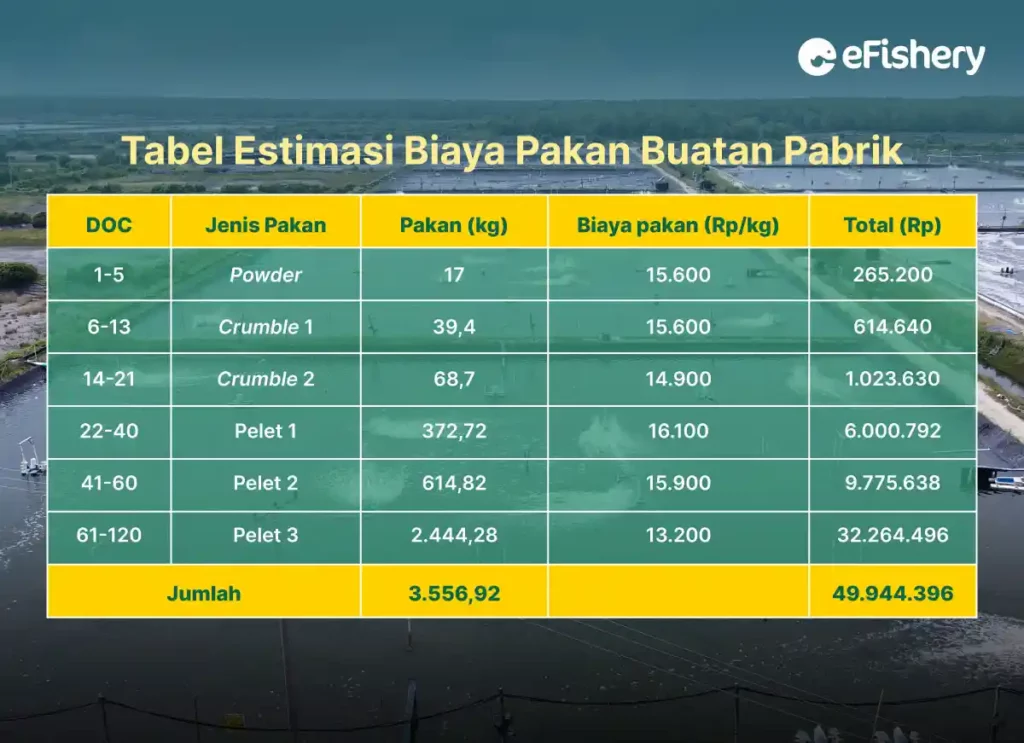
So, the estimated cost of feed needed for 1 cycle with a stocking density of 100,000 heads and a total feed of 3556.92 kg is IDR 49,944,396. The higher the nutritional content in factory feed, the higher the feed price per kg.
2. Estimated Cost of Feed for Self-Made Shrimp Ponds
If you want to reduce the cost of vannamei shrimp feed during 1 cultivation cycle, you can make feed independently using ingredients and prices that are relatively cheap but still nutritionally balanced according to the needs of the shrimp. The following is an example of calculating the cost for 1 kg of feed with 30% protein:
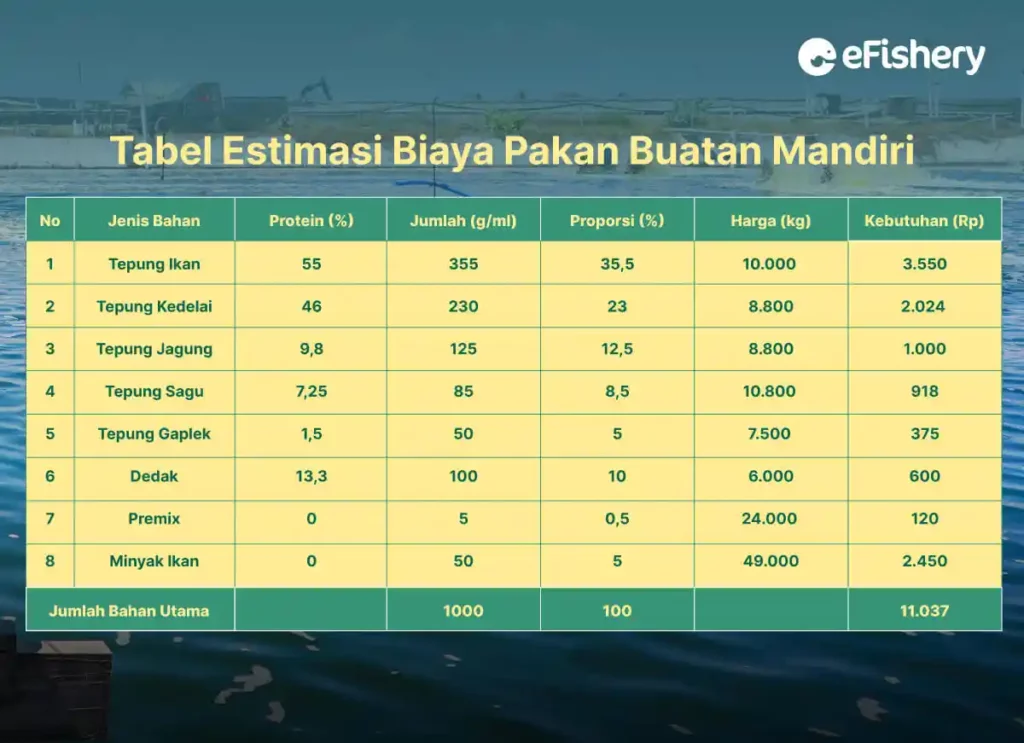
In conclusion, the cost required to make 1 kg of feed with 30% protein is IDR 11,037.
If you need an estimate of 3,556.92 kg of feed for 100,000 stocks, then you need an estimated cost of:
Cost = IDR 11,037 x 3,556.92 kg
= IDR 39,257,726
So, the cost of feed needed for 1 cycle with a total feed of 3,556.92 kg is equal to IDR 39,257,726. This price is much cheaper than the price of feed manufacturers. However, if you want to make feed independently, investment costs are needed for feed making equipment. The estimated costs are as follows:
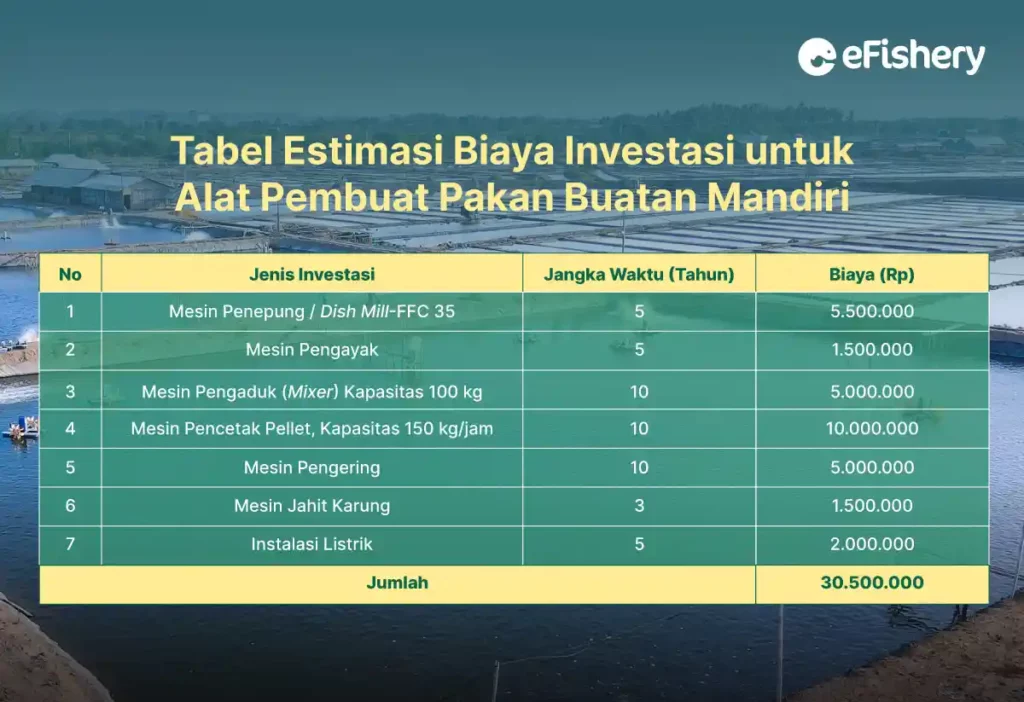
Investments in the tools above have a relatively long period of time, which is around 5-10 years, as long as proper maintenance is carried out.
Factory or Independent Feed?
Factory-made and independent feed have their respective uses depending on your needs. Here are the differences between the two:
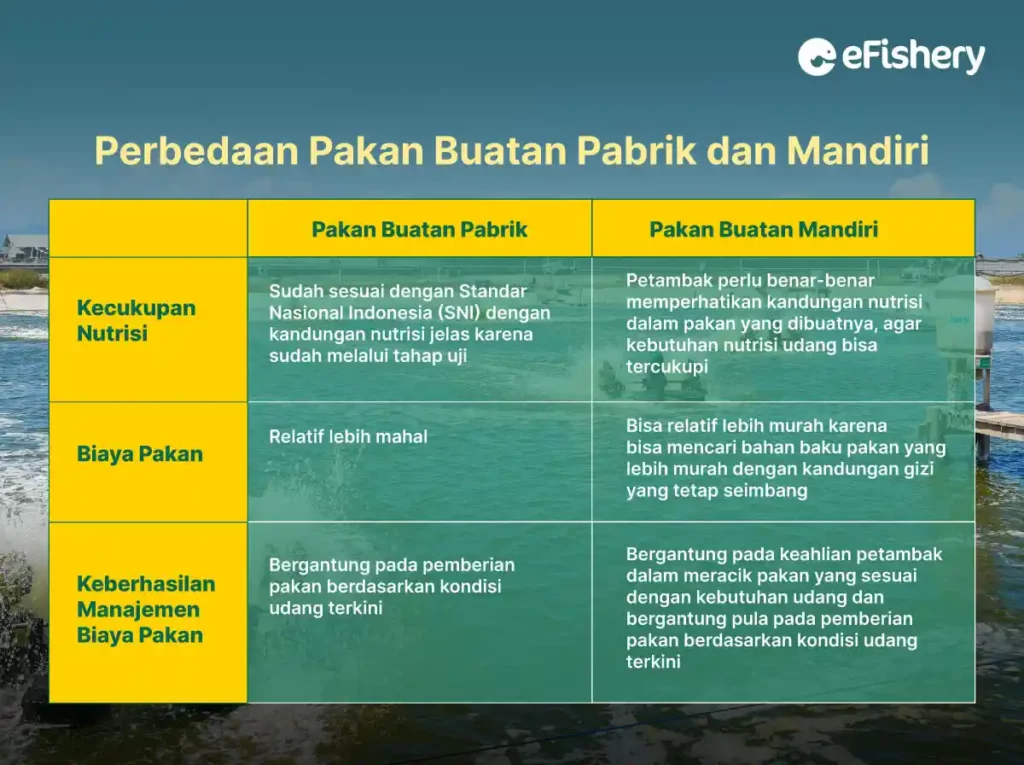
In general, Shrimp Farmers use factory-made feed as the main feed. Several large shrimp pond industries usually use self-made feed to carry out trials in increasing their shrimp production.
Feed costs are one of the determinants of the success of a shrimp farming business, because feed tends to cost more than other operational costs, such as medicines, fry, electricity, and others. Therefore, it is important to do business analysis before cultivating to create sustainable shrimp farming.
You can choose to use factory-made feed, make your own, or combine the two which is considered the best and in accordance with the conditions of each pond.
Strategies for Optimizing Shrimp Feed
Strategies that can be used to optimize vannamei shrimp feed so that its use is more in line with the needs of shrimp are as follows:
- Feeding Based on Age
Feeding based on age can help optimize feed use. The use of feed at DOC > 30 is different from the use of feed at DOC < 30 starting from the type, content, and feed requirements. So the feeding should be based on the age of the shrimp. - Feeding According to the Condition of Shrimp in Ponds
You must always provide a dose of feed according to the condition of the shrimp in the pond. Therefore, you need to conduct regular sampling to check the current health condition and appetite of the shrimp. If the shrimp are sick and their appetite is reduced, they can reduce the feed or starve it. Likewise, if the feed in the anco turns out to be used up, then a few percent of the feed can be added the next day. - Shrimp Fasting
Fasting shrimp or reducing feed periodically is one way to reduce the metabolic rate or the remaining feed in the pond. Reducing the feed dose was 30-60% from the weight of the biomass, which was done 1 day in 1 week. Reducing or fasting shrimp has no effect on weight gain, growth rate, survival (SR) of shrimp, and aquaculture production. In addition, fasting is done or not, the feed conversion ratio (FCR) is relatively the same, but fasting shrimp can reduce feed costs by 7.71 – 22.39%. - A Relatively Cheap Substitute But Highly Nutritious
For those of you who want to make feed independently, you can use ingredients that are relatively cheap but still highly nutritious. For example, because the price of fish meal is relatively expensive, you can replace it with crab shell flour, catfish head meal or something else, as long as the protein content is high or nearly the same as fish meal. This method can reduce feed costs so that it becomes more efficient. - Administration of vitamins, minerals and immunostimulants
Providing saprotam such as vitamins, minerals and immunostimulants mixed in the feed can help increase shrimp appetite and maintain shrimp immunity. Thus, the shrimp becomes not easily stressed and the shrimp appetite is maintained. - Rotation of Different Protein Feeds
The rotation of different protein feeds, namely high protein feeds are given in rotation with low protein feeds. Protein is the most expensive feed ingredient. Thus, with feed rotation it is intended to reduce the operational costs of feed in aquaculture. Reducing the proportion of protein in feed does not affect the growth rate of shrimp but can affect reduced costs, and feed becomes more economical. This feed rotation can be done by means of two days of low protein feed (28%), alternating one day of high protein feed (30-35%). - Use Automatic feeders (Autofeeder)
Use auto feeder considered able to save feed use, because it can minimize the remaining feed that is not eaten by shrimp, so you can avoid it overfeeding and increase in feed costs. Use auto feeder it can also reduce the period of intensive shrimp rearing, which is 25% shorter than manual feeding. Usually for size 35 shrimp it takes about 120 days to cultivate, but by using auto feeder can shorten the maintenance period to approximately 90 days. Thus, it can save feed costs incurred.
Budidaya Udang Lebih Mudah dengan eFarm
Kini budidaya udang vaname akan jadi lebih mudah dengan eFishery. eFishery merupakan aplikasi andalan para petambak karena memiliki banyak fitur dan produk yang dapat mendukung keberhasilan budidaya udang Bapak/Ibu. Salah satunya adalah fitur Cultivation Consultation yang memberikan akses untuk berkonsultasi dan berdiskusi langsung dengan ahli budidaya.
Isi form di bawah dan downloads application eFarm untuk mendapatkan banyak manfaatnya!
Need Help Regarding Shrimp Cultivation Business?
Fill in your personal data in the following form. Our team will immediately contact you via the number cellphone attached. Make sure the data entered is correct.

Muhammad Mustofa - Praktisi Budidaya Udang
Berpengalaman sebagai Asisten Dosen Universitas Pekalongan dan kini menjadi Online Technical Capability Development di eFishery
- KKP. 2017. Technical Instructions for Making Cheap Feed with Simple Technology. Jepara Brackish Water Aquaculture Center (BBPBAP). 16 p.
- KKP, 2020. Standard Operating Procedure (SOP) for Growing Vaname Shrimp (Litopenaeus vannamei) in Millennial Ponds. Situbondo Brackish Water Cultivation Fishery Center. 38 p
- Sary, I. R and L. Lisnawati. 2019. Information Book on Making Artificial Feed PRK.CF.02.013.01. Ministry of Education and Culture. 155 pp
